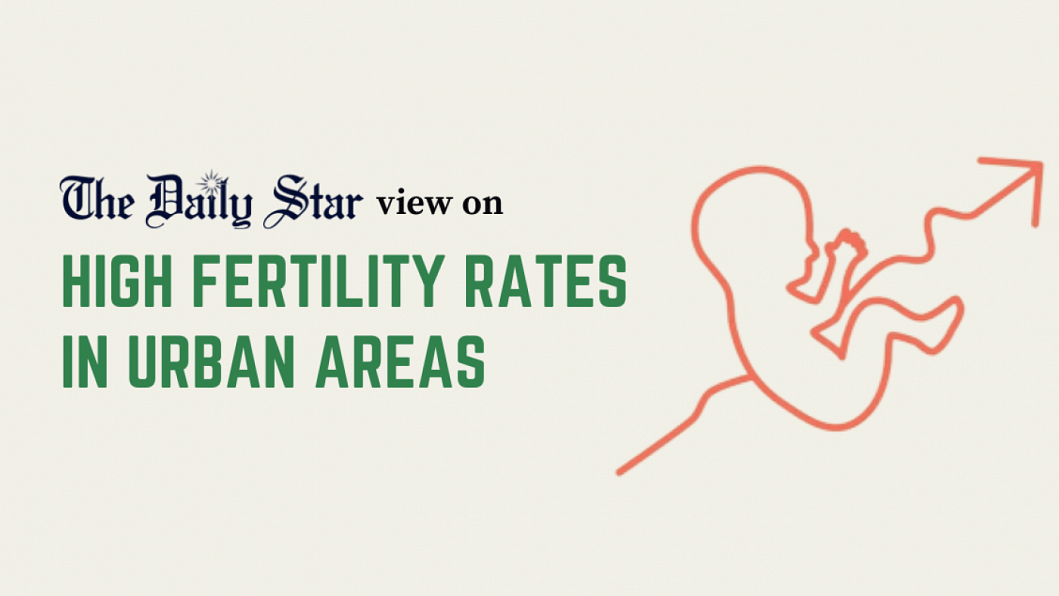Higher fertility rate in urban areas concerning

We are worried about the increase in fertility rates in urban areas of the country, as highlighted in a recent survey by the National Institute of Population Research and Training (NIPORT). According to the survey, the Total Fertility Rate (TFR), or the number of births per woman, in urban areas increased from 2.01 percent in 2013 to 2.14 percent in 2021, and in non-slum areas, from 1.74 to 1.91 during the same period. Semi-urban areas also saw an increase from 1.93 in 2013 to 2.22 in 2021.
Such findings should worry us because, up until now, we had no clue about such a scenario in the urban areas. In fact, the Population and Housing Census 2022 found that our population growth rate had actually slowed over the past four decades. Our health experts had even praised the government's rigorous family planning campaigns for such improvement. But the increasing TFR in urban areas indicates a grimmer picture of our population growth, if the current trend continues.
The question that naturally arises is: what has contributed to this situation in our urban areas? Health and population experts have identified a number of reasons, such as the rising rates of child marriage, teen pregnancy, and low use of contraceptives for the rising trend in birth rates. Several other government and private surveys done in the past two years have also found an alarming increase in child marriage rates, particularly during the first two years of the pandemic. For instance, a report by the Directorate of Secondary and Higher Education, based on information provided by 11,769 secondary schools – almost half of all such schools in the country – found that around 50,000 female students became victims of child marriage in 2021. From this data, we can easily gauge the real number of child marriage victims in 2021 alone.
As child marriage rates increased, so did teen pregnancy rates. The NIPORT survey has found that the rate of teenage pregnancy has increased from 13 percent in 2013 to 20 percent in 2021 in non-slum areas, while in slum areas, the rate increased from 21 percent in 2013 to 22 percent in 2021. The survey has also found that the use of contraceptives is low among teenagers and in non-slum areas.
Now that the problems have been identified, it is time for the authorities concerned to plan proper interventions to reduce the TFR rate in urban areas. As a first step, the government must go all-out to prevent child marriages across the country and provide families of adolescent girls with incentives, including stipends, to bring them back to school. It must also strengthen its family planning programmes in urban areas by creating awareness among the targeted populations, particularly adolescents. Only combined efforts from all the government agencies concerned can reverse the current scenario.


 For all latest news, follow The Daily Star's Google News channel.
For all latest news, follow The Daily Star's Google News channel. 






Comments